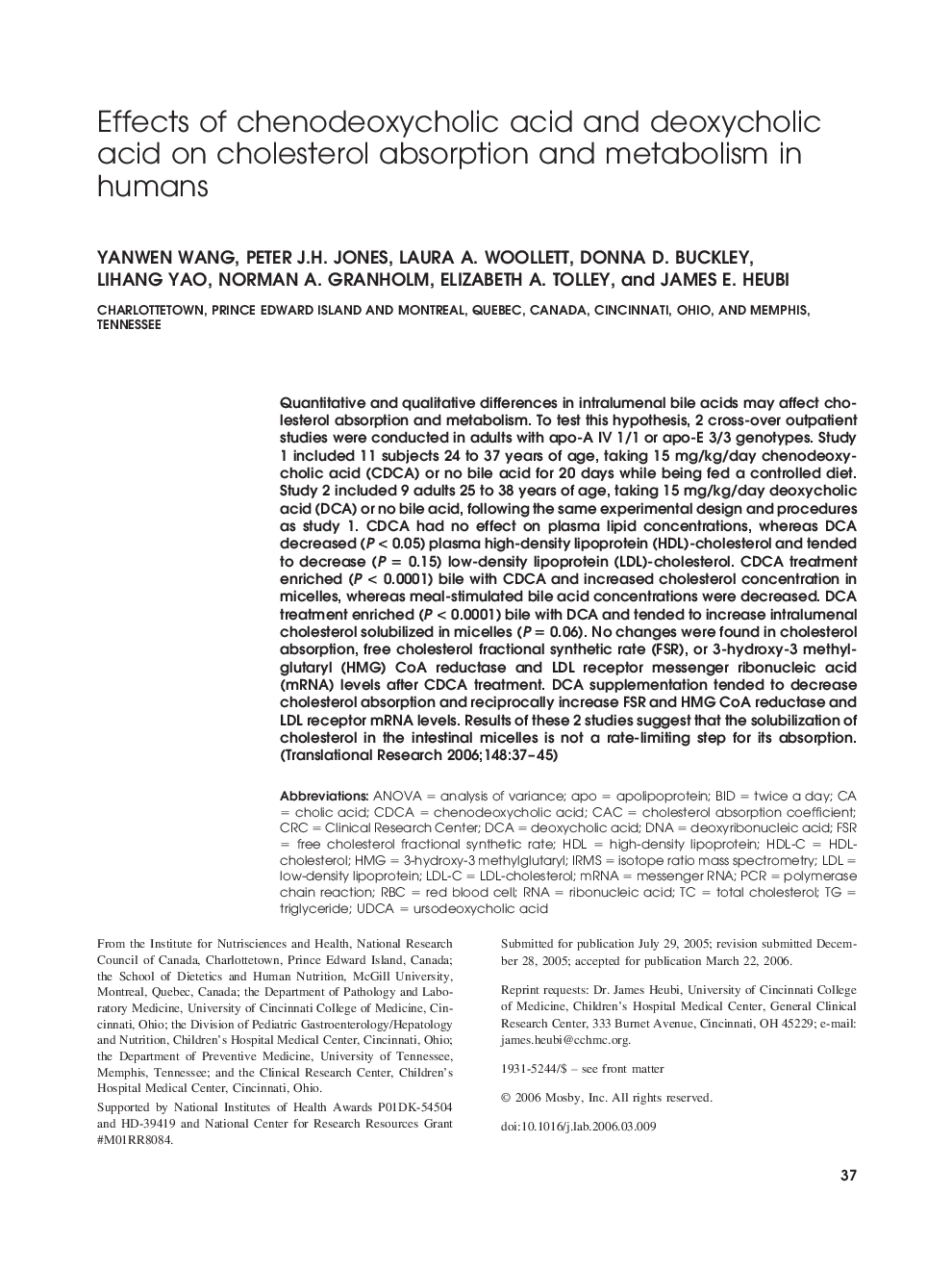| Article ID | Journal | Published Year | Pages | File Type |
|---|---|---|---|---|
| 3841513 | Translational Research | 2006 | 9 Pages |
Quantitative and qualitative differences in intralumenal bile acids may affect cholesterol absorption and metabolism. To test this hypothesis, 2 cross-over outpatient studies were conducted in adults with apo-A IV 1/1 or apo-E 3/3 genotypes. Study 1 included 11 subjects 24 to 37 years of age, taking 15 mg/kg/day chenodeoxycholic acid (CDCA) or no bile acid for 20 days while being fed a controlled diet. Study 2 included 9 adults 25 to 38 years of age, taking 15 mg/kg/day deoxycholic acid (DCA) or no bile acid, following the same experimental design and procedures as study 1. CDCA had no effect on plasma lipid concentrations, whereas DCA decreased (P < 0.05) plasma high-density lipoprotein (HDL)-cholesterol and tended to decrease (P = 0.15) low-density lipoprotein (LDL)-cholesterol. CDCA treatment enriched (P < 0.0001) bile with CDCA and increased cholesterol concentration in micelles, whereas meal-stimulated bile acid concentrations were decreased. DCA treatment enriched (P < 0.0001) bile with DCA and tended to increase intralumenal cholesterol solubilized in micelles (P = 0.06). No changes were found in cholesterol absorption, free cholesterol fractional synthetic rate (FSR), or 3-hydroxy-3 methylglutaryl (HMG) CoA reductase and LDL receptor messenger ribonucleic acid (mRNA) levels after CDCA treatment. DCA supplementation tended to decrease cholesterol absorption and reciprocally increase FSR and HMG CoA reductase and LDL receptor mRNA levels. Results of these 2 studies suggest that the solubilization of cholesterol in the intestinal micelles is not a rate-limiting step for its absorption.
